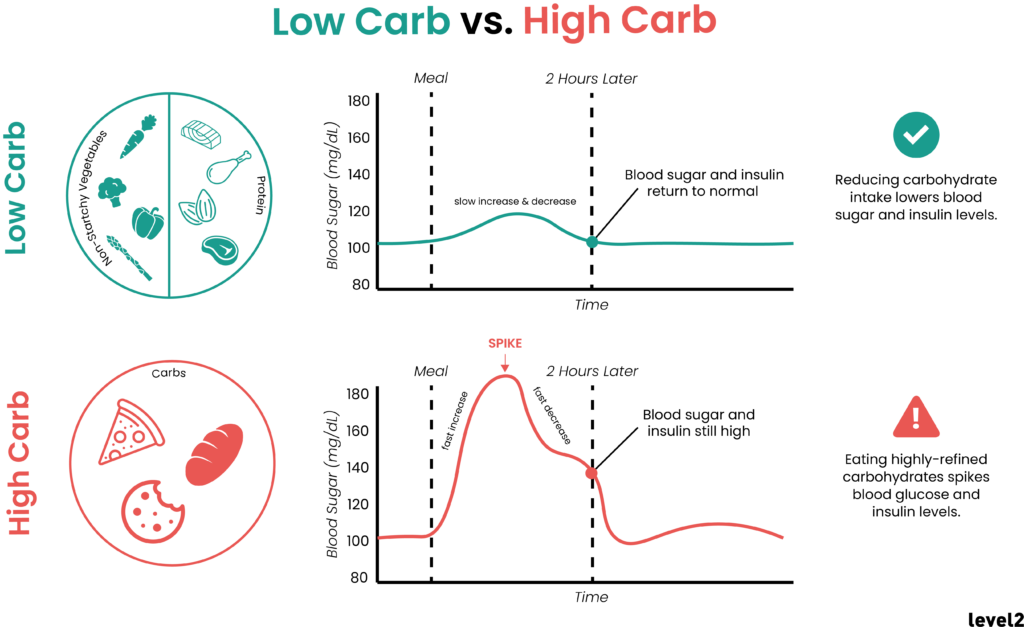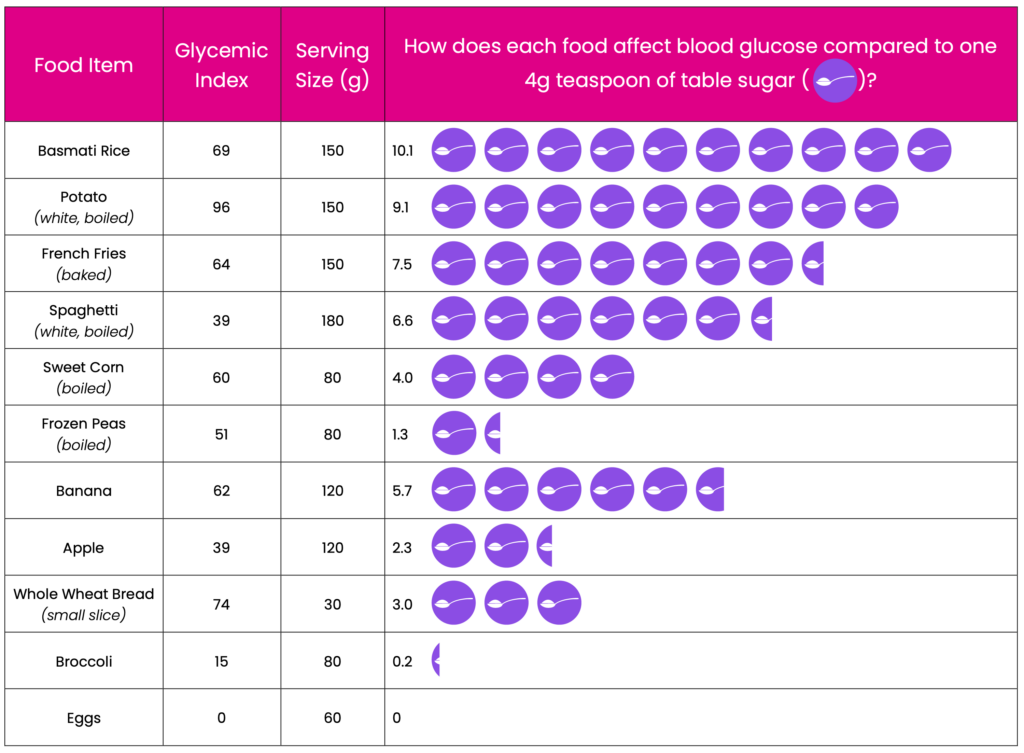What are carbs? All foods are composed of three types of nutrients – carbohydrates (carbs), protein and fat. Carbs are chains of sugars, mostly glucose, and when eaten raise blood glucose (also called blood sugar). Eating proteins and fats generally does not raise blood glucose, which is important to know while in phase 3, as you discover ways to avoid rising glucose to increase your time in range.

Why eat a low-carb diet for type 2 diabetes? Carbohydrates, especially refined ones, raise the blood glucose more than other nutrients. Eating fewer carbs and more proteins and fats will naturally reduce your blood glucose and blood insulin levels. Insulin is a natural hormone produced by your body in response to food and tells the body to store some of the incoming energy (calories).
When your insulin levels are low, your body stops trying to store excess glucose and starts trying to burn some of the stored glucose for energy. This helps reduce blood sugars and body fat. This may help you reduce the medications you need for type 2 diabetes or even get into remission. The American Diabetes Association (ADA) recommends both low carb and very low carb diets for type 2 diabetes.

What to Eat (and Not to Eat) on a Low-Carb Diet
You may implement this partially, fully or even in stages.
What to Eat
- Green/non-starchy vegetables — eat as much as you like — broccoli, asparagus, cauliflower, artichokes, mushrooms, tomato, eggplant, onion.
- Proteins — eat freely — meat (beef, pork, lamb, fish, turkey, chicken), eggs. Limit processed meats like bologna, ham, sausages.
- Natural fat — eat freely — olive oil, avocados, coconut oils, full fat dairy.
What Not to Eat
- Added sugars — cut sugar entirely.
- Sugary drinks — soda, fruit juices, iced teas and coffees, cocktails — cut out altogether and replace with water and tea.
- Starchy carbohydrates — eat as few as possible. No “white” carbs like white bread, white potatoes, white rice. Avoid breakfast cereals.
- “Fat free” foods — these usually have fat removed and sugar added.
- Snacks — usually high processed carbs such as potato chips, cookies and crackers
- Fruit — while natural, sweet fruits contain fructose, so minimize. Berries, apples and pears are a good choice.
This table will show you how common high-carb foods affect blood glucose compared to one 4g teaspoon of sugar:

Do you want to learn more about time restricted eating? Consult the Level2 Medical Guide to Low-Carb Eating.
Dec. 22 2022